
Hi, I’m a personal finance expert who loves to help you out! I’ll answer your question within a business day. Pinky swear.

As rumours circulated over the last few years of the potential for COVID to spread via banknotes, many of us tucked away our cash and turned to other forms of payment. Debit card, credit card, digital wallet. Any way we could pay that didn’t involve handling actual cash money that other potentially germy people may have touched.
Digital wallets in particular experienced a huge surge in popularity as the pandemic took hold. So much so, in fact, that for the first time payments using digital wallets overtook cash payments on in-store purchases on a global basis. According to a FIS study, cash usage dropped 10% in 2020 to account for only one-fifth of all face-to-face payments worldwide. In Canada, UK, France, Norway, Sweden and Australia, use of cash for in-store payments fell by half or more. (1)
Here in the Asia-Pacific region, we lead the world’s use of digital wallets, with about 40% of in-store payments being made via contactless methods. However, over the past year, digital wallet usage experienced growth elsewhere too, so that it now accounts for about 10% of in-store payments in North America, 8% in the Middle East and Africa, 7% in Europe, and 6% in Latin America.
Digital Wallet Use Soars in Australia
Us Aussies have long been early adopters, having started on our road towards cashlessness some time ago. However, it seems COVID gave us an even greater shove in that direction, with the FIS study suggesting cash payments here will comprise just 2.1% of all payments by 2024. This is far lower than the projected global average of 12.7%.
And with cash on the decline, digital wallets are taking up the slack. Digital wallets accounted for 24% of Australian purchases in 2020, according to the FIS study. Highlighting this growth, another study carried out by online financial broker firm Savvy found that 20.2% of its survey respondents started using a digital wallet since the beginning of 2020, and a further 7.3% started using digital wallets six months later. (2)
Within that survey, results indicated 46.5% of Australians now have a digital wallet on their smartphone. And, of those that use digital wallets, 15.9% use them all the time, while 43.3% use them most of the time. (3)
New figures from ANZ back this accelerated proliferation of digital wallets within Australia over the past year. Bank data reveals the value of transactions via ANZ digital wallets increased 108% between March and December 2020, while the number of transactions grew by 73% and the number of digital wallet users jumped by a third.
Speaking to The Australian Financial Review, ANZ general manager of savings and deposits Shannon Peachey said, “It was a trend we saw before COVID, but it did accelerate through the pandemic. We definitely see that once someone has gotten over that initial hurdle of using it, they continue to pay with it by default.” (4)

What is a Digital Wallet?
Time to take a step back. If you’re not one of the many Aussies who took up digital wallet use in the past few years, you may be wondering what digital wallets are, and how exactly they work. A digital wallet holds much the same purpose as a real wallet, in that it stores a bunch of information you need day to day. The only difference is, a digital wallet stores all that information digitally.
So, instead of carrying your credit cards and debit cards, your driving license and Medicare card, your loyalty cards and your transit card around in a physical wallet, you carry each of those cards on your device. Those cards – and all the info they contain – are held securely in your digital wallet, so you can leave the house with just your smartphone or smartwatch, while leaving your wallet on the counter.
Now, the digital wallet you utilise will largely depend on which device you use from day to day. If you have an iPhone or Apple Watch, for example, you will use the Apple Wallet primarily. This can hold everything from flight boarding passes and event tickets, to all of your credit and debit cards compatible with Apple Pay.
Opting for an Android device on the other hand, your wallet may be compatible with Apple Pay’s competitors, Samsung Pay, Google Pay, or even Fitbit Pay or Garmin Pay.
Outside of wallets containing those payment systems, your device may hold any number of other digital wallets, typically accessed via a standalone app. These smaller wallets could hold your driver’s license, Medicare card, your loyalty cards or membership cards, your transit card, or your student ID.
And security? With all this information contained within your device, you’d hope it’d be secure – and it is. Devices use both physical security hardware and other security measures, such as biometric authentication, tokenisation and decentralised identity solutions to ensure the information held within digital wallet software remains secure – and only accessible by you.
Using a Digital Wallet to Pay
Okay, so how do you use your digital wallet to pay? As you might expect, devices make this process pretty intuitive. Let’s take Apple as an example again. On your iPhone, simply open Apple Wallet and follow the steps to add your compatible debit and credit cards. You can add multiple cards, if required.
Once your card provider has verified this information, you can start using your phone to pay using your card via Apple Pay. If you have a number of devices, you will need to add your cards to each one. From there, you can select which card you want to use for each payment you make using Apple Pay, both online and in person.
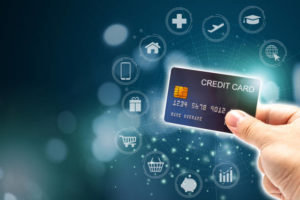
What About Virtual Cards?
Once you’ve added your card to your digital wallet, it then becomes a virtual card, right? Yes and no. Using a digital wallet, your card info is held digitally, but you still have a physical card as well. For the most part, here in Australia, you will need to have that physical card first, before you can add it to your digital wallet and use it to make payments using your device.
So, what’s a virtual card? Also known as digital cards, virtual cards are becoming increasingly popular with certain banks and card providers overseas. While they’re yet to make much of an impact on the Australian card market, virtual cards are essentially the same as plastic cards, held in digital format only. So when you apply, you are provided a digital card only, with no plastic backup.
Virtual cards are designed to work in much the same way as plastic cards, in that they have a unique 16-digit card number, CVV number, and expiry date. They can also offer the same benefits, such as rewards, perks and protection against fraud, alongside the added benefit that they can be used immediately upon approval.
MONEYME Freestyle Virtual Card
Feature-packed with fast approvals
Be approved in minutes and use it right away via digital wallet. Offers credit up to $10,000 with an annual fee of $0 to $149 (depending on credit limit). Enjoy interest-free payment terms.
MONEYME Freestyle Virtual Card is an example of this type of virtual credit card offered here in Australia. Alongside benefits such as up to 55 days interest-free on purchases and a sliding scale of fees based on credit limit and balance, the card’s main appeal is the fact that it is offered in a digital format. When you apply, you don’t have to wait for the card to arrive in the post – you can use it straight away using your digital wallet to pay via Apple Pay or Samsung Pay.
Virtual Cards with Dynamic Info
However, some virtual cards can offer further functionality. Designed to offer a more secure way to pay, these digital cards create a temporary credit card number that changes over time. So when you make a payment, you’re not providing your real card number. This can work well when signing up for subscription services you don’t plan on continuing, or when buying something online from a retailer you’re unsure of.
Alternatively, some digital cards retain the same card number, while providing a dynamic CVV code. Over in South Africa, the First National Bank launched its first virtual card in January 2021. This digital card retains the same card number, but changes its CVV every hour.
Are there any downsides to this system? While in this case, First National Bank notes that its virtual card can be used for subscription services, other virtual cards may not. Virtual cardholders that utilise dynamic information may also experience issues when returning unwanted items, or when checking in at a hotel or car rental. In these situations, the original card – and card number – used to make the purchase may need to be sighted, which would not be possible as the original card info has since changed.
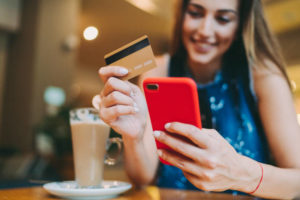
Digital Wallets vs. Credit Cards
Moving back to traditional cards now, let’s look at the various pros and cons you may experience as a user when paying with a digital wallet over plastic.
Convenience
One of the first things you’ll likely notice when you start using a digital wallet is the convenience. Instead of carrying a chunky wallet filled with cards, your phone or smartwatch holds everything you need. Working to streamline your life, your device is all you have to remember when you leave the house. If you need to pay for something, simply activate your device and tap.
Even if you’re shopping online rather than in person, your digital wallet is all about making life more convenient. When you click to buy, you can pay with your digital wallet so that it auto-fills all the necessary info and saves you the hassle of doing it yourself.
Acceptance
As you start using your digital wallet more and more, you’ll notice that for the most part, you can use your device to pay anywhere you can pay with a card. Just like when you tap to pay with your card, you tap to pay with your device. So, unless the retailer takes cash only, you are most likely able to pay with your digital wallet using the EFTPOS machine or other card payment processing device.
There are some exceptions though. As an example, you may find that when you check into a hotel, you will be required to hand over the physical card used to make the booking. This may cause something of an issue as you arrive on holiday, only to be turned away at your accommodation because you only carry a digital wallet and not a physical wallet any more.
Security
When you pay with your digital wallet, you benefit from all the same security features as you would when paying with plastic. If your card offers a zero liability policy and fraud protection, those features will still be active when you pay with your digital wallet. The same applies to premium features such as complimentary insurance and purchase protection.
For some, using a digital wallet rather than a debit or credit card feels safer. When you pay at the checkout or take cash out at the ATM, your card remains in your wallet. Using your device to pay, your card is tucked away safe from prying eyes – and from skimming machines.
Then there’s the extra layer of protection that comes with using a digital wallet. When you pay with a card, your card details are processed by the payment terminal, leaving them open to attack. When you pay with your digital wallet, your device tokenises your payment info, so the payment terminal processes that token rather than your actual card details.
And while card providers are working on making credit cards more secure – as seen in various biometric credit cards now being released – it could be said that these features are already obsolete. After all, why would you bother paying more for a credit card that offers biometric authentication when you already have a smart device that utilises that tech as standard?
Lost or Stolen
What if you lose your wallet or it gets stolen? While card providers make it easy enough for you to lock your cards and arrange for a replacement, if you’re slow to realise your wallet is gone, the thief could go to town with your credit limit. On top of that, all your personal details are now out there, including your Medicare details, and your full name and address on your driver’s license.
While losing your phone would no doubt be painful, as long as it’s locked, the thief can do nothing with it apart from reset it to factory settings and sell it on. Your details remain safe. It’s also worth considering that if you leave your wallet somewhere safe at home, should your phone go missing, you still have access to everything you need in the physical backup.
Rewards & Features
You have a rewards credit card and you want to make the most of it. Do you still earn rewards when you use your digital wallet to pay? Yes indeed.
While that process of tokenisation is still used to keep your card details safe, each transaction you make using your digital wallet is handled in exactly the same way as when you use your physical card. With the merchant code attached to the transaction, your card provider simply assigns the correlating number of points per dollar spent, just as it would when you pay with plastic.
Going back to Apple as an example, Apple Pay’s FAQ page spells it out clearly: “When you pay using Apple Pay, you continue to get the rewards, benefits, and security that your credit, debit, or prepaid card provides”.
What about the features? This is where things become a little murky. If your card offers airport lounge access, for example, the lounge may need to see your physical card before allowing you entry. The same may apply when you want to access upgrades on flights and at hotels. Making the most of other features, such as complimentary insurance, should be fine in digital only.
Digital Wallets: The Future of Payments?
If you’re now thinking about trying out a digital wallet, you certainly won’t be alone. This year (2023), it’s predicted 1.3 billion people globally will be using a digital wallet solution on their mobile phones. And, throughout that time, digital wallets are surely only going to get better, offering more benefits, more convenience, and well, more of everything.
Want a peek into what the future might hold for digital wallets? Here are some of the more innovative ways in which digital wallets are now being integrated into everyday life, providing a stepping stone for even more advances as the tech evolves.
-
- Over in the US, there’s a push for legislation that would allow anyone to set up a free bank account, known as a FedAccount, at any credit union, bank or Post Office. Operated via a digital wallet, this system would allow every user access to their finances, while also receiving government related funds such as tax credits and stimulus payments.
Senate Banking Chairman Sherrod Brown of Ohio) explained 22% of families cannot open a basic bank account and must rely on non-traditional financial services, such as cheque cashing companies. “Right now, the less money you have, the more you pay to use it,” he said. “We need to get everyone access to basic bank accounts that don’t come with abusive fees.” (5)
- Over in the US, there’s a push for legislation that would allow anyone to set up a free bank account, known as a FedAccount, at any credit union, bank or Post Office. Operated via a digital wallet, this system would allow every user access to their finances, while also receiving government related funds such as tax credits and stimulus payments.
-
- Travel has been a bit hard due to COVID. But travel companies are fighting back, introducing digital wallets to allow people to travel more freely. One such example is the biometric VeriFLY+ Stay app, a mobile health passport app for the hospitality and travel industry, secured with selfie biometrics and designed to provide users with COVID-19 credentials and travel guidelines. British Airways is one of the many travel organisations signed up to utilise the system.
Closer to home, Air New Zealand trials a digital vaccination passport on flights between Auckland and Sydney. The Travel Pass app will allow travellers to create a ‘digital health wallet’ that is linked to their passport. Once they have been tested or vaccinated, the lab can securely send that information to the app, which is then cross-checked against the travel requirements for the country they want to visit.
- Travel has been a bit hard due to COVID. But travel companies are fighting back, introducing digital wallets to allow people to travel more freely. One such example is the biometric VeriFLY+ Stay app, a mobile health passport app for the hospitality and travel industry, secured with selfie biometrics and designed to provide users with COVID-19 credentials and travel guidelines. British Airways is one of the many travel organisations signed up to utilise the system.
-
- Also COVID related, an app launched by Cozera is designed as a vaccination ‘passport’ to be used within everyday life. Accessed via a digital wallet, it has facial recognition fraud protections that can be used for a range of credentials, including proof of vaccination. Cozera is targeting financial institutions for the deployment of this solution, but will work to deploy the app in healthcare, utilities, telecommunications, and other sectors.
-
- In the world of payments, Apple supports BitPay Prepaid Mastercard within Apple Pay, effectively allowing users to spend cryptocurrency via their digital wallet wherever Mastercard is accepted. Supporting Bitcoin, Bitcoin Cash and Ethereum, as well as USD stable coins including USD Coin (USDC), Gemini Dollar (GUSD), Paxos Standard (PAX), and Binance USD (BUSD), the BitPay Prepaid Mastercard will be arriving here in Australia soon.
-
- In February, EFTPOS rolled out a QR payments network across Australia. In a move to simplify the checkout process and widen contactless payment options for consumers, the network will work by generating unique QR codes containing transaction details that customers can capture on their mobile phone to make a digital wallet payment.
A nice feature of this system is that it can instantly credit loyalty points to the customer if they’ve linked a loyalty program to their mobile wallet.
- In February, EFTPOS rolled out a QR payments network across Australia. In a move to simplify the checkout process and widen contactless payment options for consumers, the network will work by generating unique QR codes containing transaction details that customers can capture on their mobile phone to make a digital wallet payment.
1. https://9to5mac.com/2021/03/01/apple-pay-digital-wallets-overtook-cash-in-popularity/
2. https://ia.acs.org.au/article/2021/australia-to-be-98pc-cashless-by-2024.html
3. https://mozo.com.au/credit-cards/articles/half-of-aussies-reaching-for-digital-wallets-over-leather
4. https://www.afr.com/technology/digital-wallet-usage-soars-in-covid-anz-20210307-p578i3
5. https://www.cutimes.com/2021/03/15/banking-chairman-brown-pushing-federal-digital-wallet-proposal/
6. Photo source: Ghetty images

Pauline Hatch
Pauline is a personal finance expert at CreditCard.com.au, with 9 years in money, budgeting and property reporting under her belt. Pauline is passionate about seeing Aussies win by making their money – and their credit cards – work smarter, harder and bigger.
You might be interested in

Credit Card Types
Credit Card Fraud Statistics

Tips & Guides
Complete Guide to the Velocity Frequent Flyer Program
Recently Asked Questions
Something you need to know about this card? Ask our credit card expert a question.
Ask a question
Hi, I’m a personal finance expert who loves to help you out! I’ll answer your question within a business day. Pinky swear.

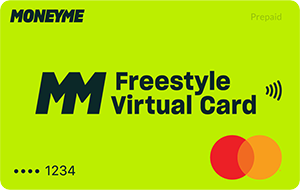

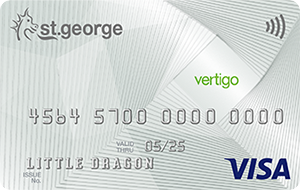
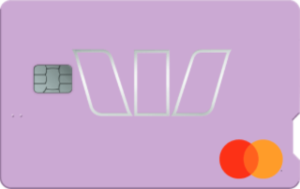
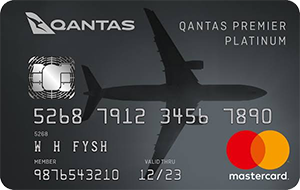
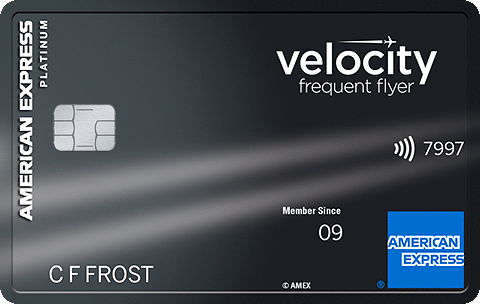
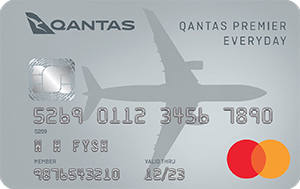







Pat
10 September 2022Pauline
12 September 2022